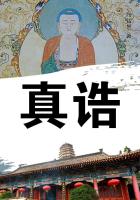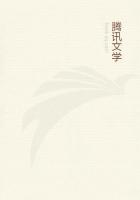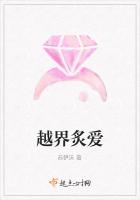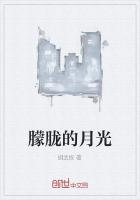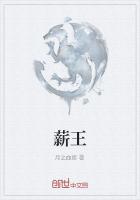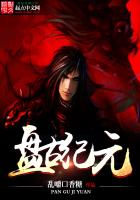For centuries Egyptian physicians had a great reputation, and in the Odyssey (Bk. IV), Polydamna, the wife of Thonis, gives medicinal plants to Helen in Egypt--"a country producing an infinite number of drugs . . . where each physician possesses knowledge above all other men." Jeremiah (xlvi, 11) refers to the virgin daughter of Egypt, who should in vain use many medicines. Herodotus tells that Darius had at his court certain Egyptians, whom he reckoned the best skilled physicians in all the world, and he makes the interesting statement that: "Medicine is practiced among them on a plan of separation; each physician treats a single disorder, and no more: thus the country swarms with medical practitioners, some under taking to cure diseases of the eye, others of the head, others again of the teeth, others of the intestines, and some those which are not local."[12]
[12] The History of Herodotus, Blakesley's ed., Bk. II, 84.
A remarkable statement is made by Pliny, in the discussion upon the use of radishes, which are said to cure a "Phthisicke," or ulcer of the lungs--"proofe whereof was found and seen in AEgypt by occasion that the KK. there, caused dead bodies to be cut up, and anatomies to be made, for to search out the maladies whereof men died."[13]
[13 Pliny, Holland's translation, Bk. XIX, Chap. V, Sect. 26.
The study of the anatomy of mummies has thrown a very interesting light upon the diseases of the ancient Egyptians, one of the most prevalent of which appears to have been osteo-arthritis. This has been studied by Elliot Smith, Wood Jones, Ruffer and Rietti. The majority of the lesions appear to have been the common osteo-arthritis, which involved not only the men, but many of the pet animals kept in the temples. In a much higher proportion apparently than in modern days, the spinal column was involved.
It is interesting to note that the "determinative" of old age in hieroglyphic writing is the picture of a man afflicted with arthritis deformans. Evidences of tuberculosis, rickets and syphilis, according to these authors, have not been found.
A study of the internal organs has been made by Ruffer, who has shown that arterio-sclerosis with calcification was a common disease 8500 years ago; and he holds that it could not have been associated with hard work or alcohol, for the ancient Egyptians did not drink spirits, and they had practically the same hours of work as modern Egyptians, with every seventh day free.
ASSYRIAN AND BABYLONIAN MEDICINE
OF equally great importance in the evolution of medicine was the practically contemporary civilization in Mesopotamia. Science here reached a much higher stage then in the valley of the Nile.
An elaborate scheme of the universe was devised, a system growing out of the Divine Will, and a recognition for the first time of a law guiding and controlling heaven and earth alike. Here, too, we find medicine ancillary to religion. Disease was due to evil spirits or demons. "These 'demons'--invisible to the naked eye were the precursors of the modern 'germs' and 'microbes,' while the incantations recited by the priests are the early equivalents of the physician's prescriptions. There were different incantations for different diseases; and they were as mysterious to the masses as are the mystic formulas of the modern physician to the bewildered, yet trusting, patient. Indeed, their mysterious character added to the power supposed to reside in the incantations for driving the demons away. Medicinal remedies accompanied the recital of the incantations, but despite the considerable progress made by such nations of hoary antiquity as the Egyptians and Babylonians in the diagnosis and treatment of common diseases, leading in time to the development of an extensive pharmacology, so long as the cure of disease rested with the priests, the recital of sacred formulas, together with rites that may be conveniently grouped under the head of sympathetic magic, was regarded as equally essential with the taking of the prescribed remedies."[14]
[14] Morris Jastrow: The Liver in Antiquity and the Beginnings of Anatomy. Transactions College of Physicians, Philadelphia, 1907, 3. s., XXIX, 117-138.
Three points of interest may be referred to in connection with Babylonian medicine. Our first recorded observations on anatomy are in connection with the art of divination-- the study of the future by the interpretation of certain signs. The student recognized two divisions of divination-- the involuntary, dealing with the interpretation of signs forced upon our attention, such as the phenomena of the heavens, dreams, etc., and voluntary divination, the seeking of signs, more particularly through the inspection of sacrificial animals. This method reached an extraordinary development among the Babylonians, and the cult spread to the Etruscans, Hebrews, and later to the Greeks and Romans.
Of all the organs inspected in a sacrificial animal the liver, from its size, position and richness in blood, impressed the early observers as the most important of the body. Probably on account of the richness in blood it came to be regarded as the seat of life--indeed, the seat of the soul. From this important position the liver was not dislodged for many centuries, and in the Galenic physiology it shared with the heart and the brain in the triple control of the natural, animal and vital spirits. Many expressions in literature indicate how persistent was this belief. Among the Babylonians, the word "liver" was used in hymns and other compositions precisely as we use the word "heart," and Jastrow gives a number of illustrations from Hebrew, Greek and Latin sources illustrating this usage.

